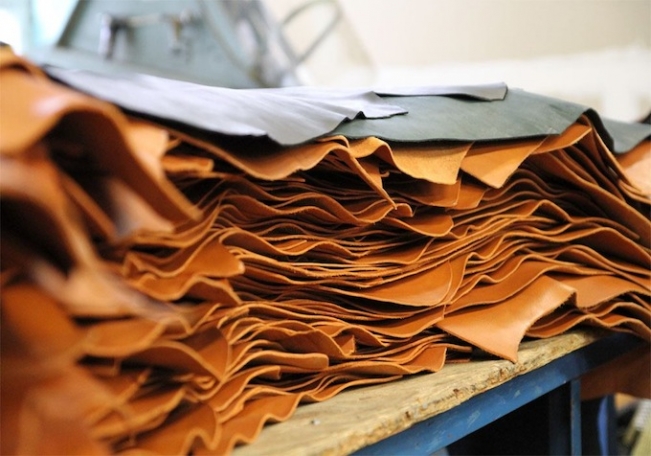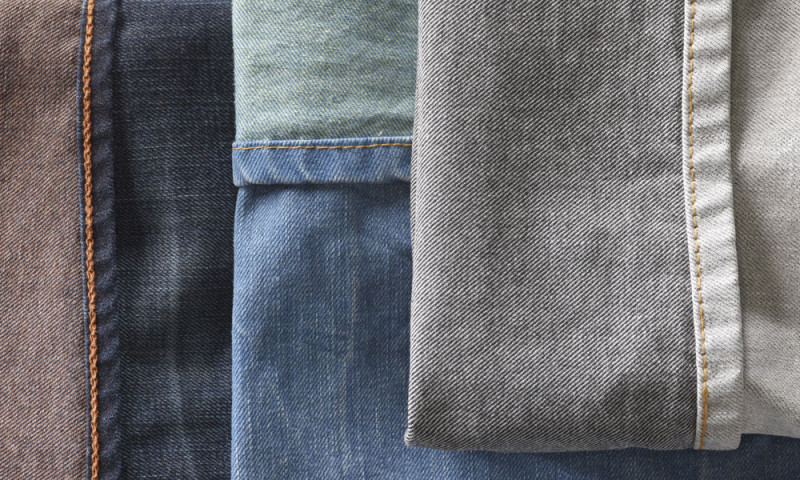After oil, fashion is the most polluting industry on the globe, believes Simone Cipriani, founder of the Ethical Fashion Initiative.
But as many industries, from automobiles to agriculture, try to make their products and processes greener, the fashion industry – hardly a leader in conversations on reducing climate change – is starting to shift as well, he said.
Despite a reputation for promoting throw-away culture, “I don’t think the sustainable movement is contrary to the core value of the fashion industry,” Cipriani said. “Whatever industry that is not sustainable, including fashion, will lose its market share because consumers will be more and and more aware.”
Tom Cridland, a young entrepreneur from London, for instance, began two years ago making sweatshirts and trousers guaranteed to last 30 years. Recently he launched a “30-year” jacket as well. He started the clothing brand with just a £6,000 loan but was turning over more than £250,000 a year later, he said.
He sourced fabric for his clothing from cloth makers in Portugal with a reputation for making materials that last.
“They showed me some sweatshirts they made in the 1970s that were still in great condition,” he said.
His jackets sell for about £200-250 pounds – more than jackets from some mainstream retailers. But he says some buyers are willing to pay more for a sustainable product.
London designer Vivienne Westwood also is working towards environmentally friendly fashion by partnering with the Ethical Fashion Initiative. She focuses on supporting better treatment of workers and the use of green materials.
She and the institute developed the “Handmade with Love” collection which features bags created by women’s cooperative programs in Nairobi. All are manufactured using recycled canvas, reused roadside banners, unused leather off-cuts, and recycled brass, and they are produced in the community, according to a statement by the Ethical Fashion initiative.
Stella McCartney, another fashion designer, has said she also wants to help the fashion industry have less of a negative impact on the environment.
“We are all living on this land with limited resources, and we all have to be conscious about how we consume and how we manufacture and how we source – and the fashion industry is no different than anyone else,” she said in an interview with Business in Fashion, an online publication.
THE BIG CLOTHING FOOTPRINT
In 2015, the Massachusetts Institute of Technology published a study arguing that the greenhouse gas emissions produced by the cotton industry each year were the equivalent of driving to the sun and back about 1,300 times – or about the same as the emissions from every car in New York state over two years.
Producing and selling a piece of clothing has a significant “carbon footprint” – the total set of greenhouse gas emissions produced in its manufacture, from agricultural emissions from producing cotton, for instance, through to transportation to bring a finished piece of clothing to the shop where it is sold.
As companies try to cut emissions and environmental damage to make fashion more sustainable, polluting leather tanneries are a particular focus, Cipriani said.
In Ethiopia, the Ethical Fashion Initiative has partnered with HAFDE Tannery to help ensure strict environmental and fair labour standards are met. The tannery uses only locally sourced leather.
The initiative hopes the tannery will become an example to guide more polluting leather-makers across the world.
The initiative also is promoting production of manually woven fabric and natural dyes. “We want to show the industry that sustainability is feasible,” Cipriani said.
Building cleaner supply chains in Africa is key because many countries in the region don’t have strong environmental regulations in place, he said.
“Industrialised countries today have environmental regulations enforced so they aren’t polluting more, but a lot of these industries have moved to the developing world where there is less (strong) environmental policy,” Cipriani said.
According to a study published in 2008 by the California-based Organic Leather, huge number of tanneries once based in the United States have moved their operations overseas.
Cipriani acknowledges that moving the fashion industry toward greater sustainability is not going to be a simple process.
“To be sustainable is expensive,” he said. “However the cost is not really paid by people, it is paid by the environment.”
Cipriani said he believes sustainability has to reach beyond environmental impacts to include the welfare of employees who make the clothing.
“When an industry doesn’t care about how people are treated, no consideration of sustainability is possible. You can’t just care about the environment and forget about the fair and ethical treatment of people,” he said.
Cipriani said he is sure the fledgling push toward more sustainable fashion is more than a passing trend.
“It is the growing trend. It has to be or else the planet will disappear,” he said. “One day we will not even say sustainable; we will just call it fashion.”


